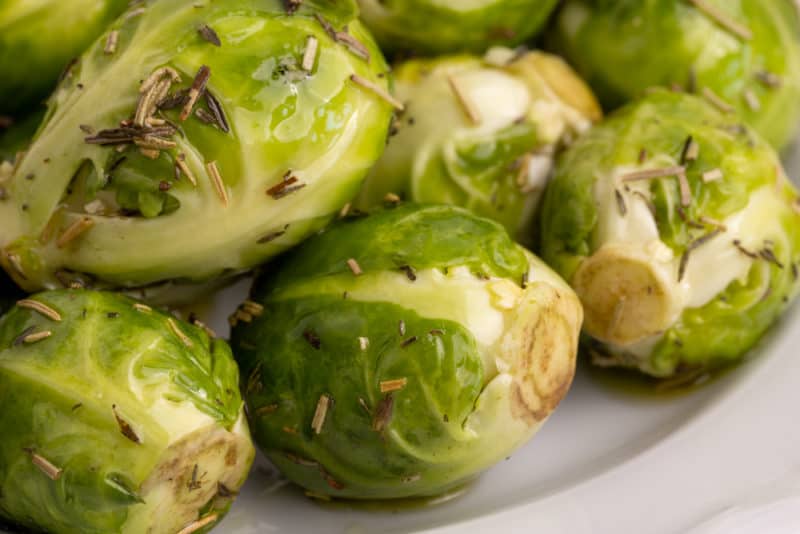How to Tell if Brussel Sprouts Are Bad: A Comprehensive Guide
Brussels sprouts are a nutritious and versatile vegetable that can be enjoyed in various dishes. However, like all fresh produce, they can spoil if not stored properly or if kept for too long. Knowing how to identify bad Brussels sprouts is essential to ensure food safety and maintain the quality of your meals. This article will explore the signs of spoilage, proper storage techniques, and tips for selecting fresh Brussels sprouts, along with a detailed FAQ section.
Understanding Brussels Sprouts
Brussels sprouts (Brassica oleracea var. gemmifera) are a member of the cruciferous vegetable family, which also includes broccoli, cauliflower, and kale. They are known for their small, cabbage-like appearance and are rich in vitamins C and K, fiber, and antioxidants. Brussels sprouts can be enjoyed roasted, steamed, sautéed, or even raw in salads.
Signs of Spoilage
Identifying bad Brussels sprouts is crucial to avoid foodborne illnesses and ensure a pleasant culinary experience. Here are the key signs to look for when assessing the freshness of Brussels sprouts:
1. Appearance
- Color: Fresh Brussels sprouts should be bright green. If you notice yellowing leaves or brown spots, this is a sign of spoilage. While some discoloration can be normal, extensive yellowing indicates that the sprouts are past their prime.
- Texture: Fresh Brussels sprouts should feel firm to the touch. If they are soft, mushy, or slimy, they have likely gone bad and should be discarded.
- Leaves: The outer leaves of Brussels sprouts may wilt or become discolored over time. If only a few outer leaves are yellow or wilted, you can peel them off and use the inner sprouts. However, if the entire sprout appears wilted or has dark spots, it is best to throw it away.
2. Smell
A foul or sour odor is one of the most telling signs that Brussels sprouts have spoiled. Fresh Brussels sprouts have a mild, earthy scent. If they emit a strong, unpleasant smell, it’s best to discard them.
3. Mold
If you see any fuzzy mold on the surface of the Brussels sprouts, they should be thrown away immediately. Mold can contaminate surrounding food, making it unsafe to consume.
4. Sliminess
A slimy texture is a clear indication that Brussels sprouts are no longer fresh. If the sprouts feel slippery or have a film on them, it’s time to dispose of them.
How Long Do Brussels Sprouts Last?
The shelf life of Brussels sprouts depends on how they are stored:
- Fresh Brussels Sprouts: When stored properly in the refrigerator, fresh Brussels sprouts can last for about 1 to 2 weeks. It’s best to keep them in a plastic bag in the vegetable crisper drawer.
- Cooked Brussels Sprouts: Leftover cooked Brussels sprouts should be consumed within 3 to 4 days when stored in an airtight container in the refrigerator.
- Frozen Brussels Sprouts: If you choose to freeze Brussels sprouts, they can last for about 3 to 5 weeks. However, the quality may diminish over time, affecting their flavor and texture.
Proper Storage Techniques
To maximize the freshness of Brussels sprouts and extend their shelf life, follow these storage tips:
- Do Not Wash Before Storing: Washing Brussels sprouts before storing can introduce moisture, leading to faster spoilage. Only wash them just before cooking.
- Keep in the Refrigerator: Store Brussels sprouts in the vegetable crisper drawer of your refrigerator. They should be kept in a plastic bag to maintain moisture while allowing for some air circulation.
- Avoid Ethylene Producers: Keep Brussels sprouts away from fruits like apples and bananas that emit ethylene gas, which can accelerate spoilage.
- Check Regularly: Inspect stored Brussels sprouts regularly for any signs of spoilage. Remove any spoiled sprouts immediately to prevent them from affecting the others.
Tips for Selecting Fresh Brussels Sprouts
When shopping for Brussels sprouts, consider the following tips to ensure you select the freshest produce:
- Look for Firmness: Choose Brussels sprouts that feel firm and heavy for their size. Avoid those that feel light or have a soft texture.
- Check the Color: Select Brussels sprouts that are bright green with no yellowing or browning. The leaves should be tightly packed and not loose.
- Size Matters: Smaller Brussels sprouts tend to be sweeter and more tender than larger ones. Aim for sprouts that are uniform in size for even cooking.
- Inspect the Stem: If buying Brussels sprouts still attached to their stem, look for a fresh, green stem. A dry or brown stem indicates that the sprouts are older.
Cooking with Brussels Sprouts
Brussels sprouts can be prepared in various ways, enhancing their flavor and texture. Here are some popular cooking methods:
- Roasting: Roasting Brussels sprouts in the oven brings out their natural sweetness. Toss them with olive oil, salt, and pepper, and roast at 400°F (200°C) for about 20-30 minutes.
- Sautéing: Sautéing Brussels sprouts in a pan with butter or olive oil adds a delicious caramelized flavor. Cook them over medium heat until they are tender and golden brown.
- Steaming: Steaming Brussels sprouts preserves their nutrients and bright color. Steam for about 5-7 minutes until they are tender but still crisp.
- Raw: Shredded raw Brussels sprouts can be used in salads for a crunchy texture. Toss them with a vinaigrette for a refreshing side dish.
FAQ Section
Q: How can I tell if Brussels sprouts are bad?
A: Look for yellowing leaves, a foul odor, slimy texture, or mold. If they feel soft or mushy, they are likely spoiled.
Q: How long do fresh Brussels sprouts last in the fridge?
A: Fresh Brussels sprouts can last about 1 to 2 weeks when stored properly in the refrigerator.
Q: Can I eat Brussels sprouts that have some yellow leaves?
A: If only a few outer leaves are yellow, you can peel them off and use the inner sprouts. However, if the entire sprout is yellow or has dark spots, it’s best to discard it.
Q: What should I do if my cooked Brussels sprouts smell bad?
A: If cooked Brussels sprouts have an unpleasant odor, it’s best to throw them away to avoid any risk of foodborne illness.
Q: How should I store Brussels sprouts to keep them fresh?
A: Store Brussels sprouts in the vegetable crisper drawer of the refrigerator in a plastic bag. Do not wash them before storing.
Conclusion
Knowing how to tell if Brussels sprouts are bad is essential for maintaining food safety and enjoying this nutritious vegetable at its best. By paying attention to appearance, smell, and texture, you can ensure that you’re consuming fresh Brussels sprouts. Proper storage techniques and selecting high-quality sprouts at the store will also enhance your culinary experience. With these tips in mind, you can confidently enjoy Brussels sprouts in your meals.
Table of Information
| Aspect | Fresh Brussels Sprouts | Cooked Brussels Sprouts |
|---|---|---|
| Shelf Life | 1-2 weeks in the fridge | 3-4 days in the fridge |
| Signs of Spoilage | Yellow leaves, foul odor, slimy | Bad smell, mold, off texture |
| Storage Method | Refrigerate in a plastic bag | Store in an airtight container |
| Cooking Methods | Roasting, sautéing, steaming, raw | Reheat thoroughly before consuming |
For more detailed information about Brussel sprouts and their storage, you can refer to the Wikipedia page.This comprehensive guide provides insights into identifying bad Brussels sprouts and ensuring you enjoy this nutritious vegetable safely.



